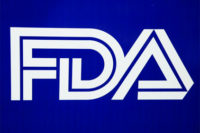FDA released its third annual Reportable Food Registry (RFR) report to identify patterns of adulteration, target inspection resources and provide early warning on problems and public health risks from reportable foods. The report covers September 2011 to September 2012.
RFR was established by a 2007 amendment to the Food, Drug and Cosmetic Act to help protect public health and covers all food regulated by FDA except infant formula and dietary supplements. A reportable food is an article for which there is a reasonable probability the use of or exposure to it will cause serious adverse health consequences or death for humans or animals.
Previous RFR reports have led to enhancements to bring the Safety Reporting Portal Rationale Questionnaire, the form used to submit an RFR report, into line with FSMA requirements. These changes became effective September 8, 2012. Their effect on the RFR will be measurable in Year Four.
The number of Year Three entries increased to 1,095, up from 882 in Year Two. Year One’s 2,240 reports remain the highest number because of Salmonella-contaminated hydrolyzed vegetable protein, which resulted in 1,071 reports. Incidents that resulted in the highest number of reports in Year Three include the presence of Listeria monocytogenes in fresh onions, resulting in 136 entries; Salmonella Braenderup in imported mangoes, resulting in 104 entries; and undeclared milk in a national snack bar, resulting in 42 entries.
Amended reports containing additional information to correct or complete an existing report have increased from 139 in Year One to 262 in Year Three. Reports in the fresh-cut product category have also increased, from nine reports in Year Two to 23 in Year Three. Fresh-cut and raw agricultural commodity produce were the most frequently reported commodities in the Year Three report. Undeclared allergen reports increased as well, from 75 in Year Two to 85 this year, while spices and seasonings reports decreased.
In three cases, submissions made to the RFR alerted FDA early to potential public health issues before potentially harmful products reached the marketplace. A voluntary report from the Michigan Department of Agriculture and Rural Development alerted FDA to a positive test result for Salmonella infantis contamination in a nationally distributed dog food product. Through an FDA review, dry pet food produced at a South Carolina facility was linked to 53 illnesses in humans, resulting in 17 major brand recalls and 13 RFR reports.
In the second case, the Canadian Food Inspection Agency notified FDA that products from a California onion producer tested positive for Listeria monocytogenes. This incident resulted in the highest number of RFR incidents for 2013, and FDA investigation resulted in two recall expansions. As a result, potentially dangerous products were removed from the marketplace, and human illnesses were avoided.
In the third instance, a manufacturer received a complaint of a severe allergic reaction after a consumer ate a snack bar later found to have high levels of undeclared milk protein. The product was quickly recalled, and the producer implemented new regulations to ensure allergen information provided by ingredient suppliers is accurately transferred to a product’s label.
FDA also plans to use RFR data in identifying foods that require preventive controls in accordance with FSMA. RFR submissions also resulted in five firms being placed on Import Alert and four Import Bulletins, which increased surveillance at ports of entry of products that were the subject of RFR submissions.


